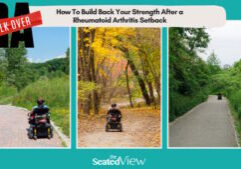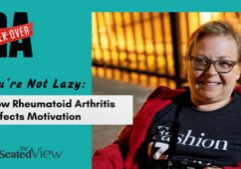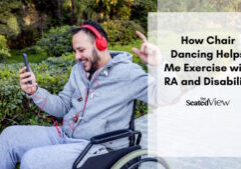The AID Principle or How to Open a Door
Sometimes, you meet someone who really gets it.
I was swinging by my dentist with the latest payment on the crown that cost enough that I’m sure it’s made of a giant ruby. Since nobody was about on the sidewalk, I knocked on the window and waved madly to catch the attention of someone who could open the door for me. A patient in the waiting room saw me and made gestures requesting whether I wanted help with the door. I indicated in the affirmative and she came out to join me.
Helpful Person: is it best if I hold the door open from here or come outside?
And then we laughed companionably, continued chatting and I entered my dentist’s office without any further issues.
I would like to nominate this woman for Best Assist of the Year for demonstrating a thorough understanding of the 3-step principle of helping a person with a disability (well, anyone really). I call it AID.
- Ascertain that the person needs help. In this case, the knocking on the window was a pretty obvious sign and when she mimed helping with the door, my smiling and nodding like a demented woodpecker further cemented the deal.
- Inquire how assistance will be most helpful. Instead of insisting to do it her way (as in another recent experience with someone desperate to help), this H.P. asked which way she should open the door. Many people stand inside and push the door open with their hand. This tends to only be helpful for the ambulatory. Unless you’re Hercules – and most people aren’t – it’s difficult to push the door open as much as it needs to be. More importantly, as you drive the wheelchair through the door, they will need to get their feet out of the way and this means putting less pressure on the door, resulting in a hopeless tangle of door and wheelchair. Taking a few steps outside, getting out of the way and holding the door fully open is usually best.
- Discover that you can easily associate a situation in your own life with the present one. Sharing a commonality makes the whole thing easier. This particular H.P. realized that using a wheelchair was very similar to traveling with a stroller and instantly remembered what was most frustrating about that experience.
Tag:
Read More
Discover what else I've been writing about...















